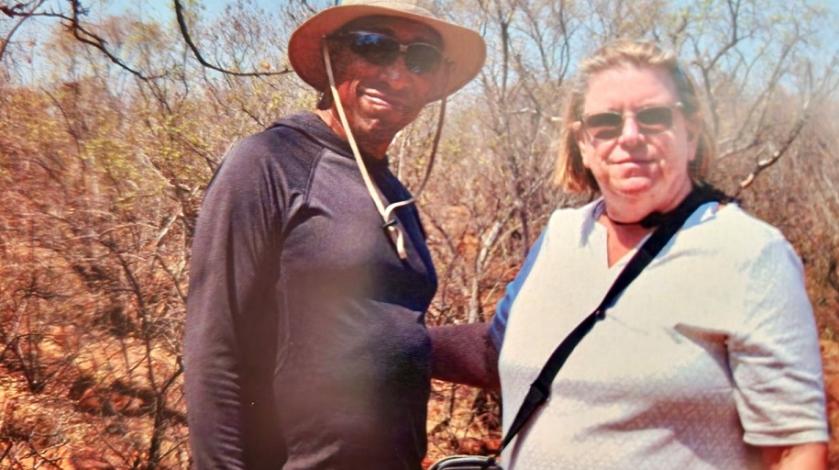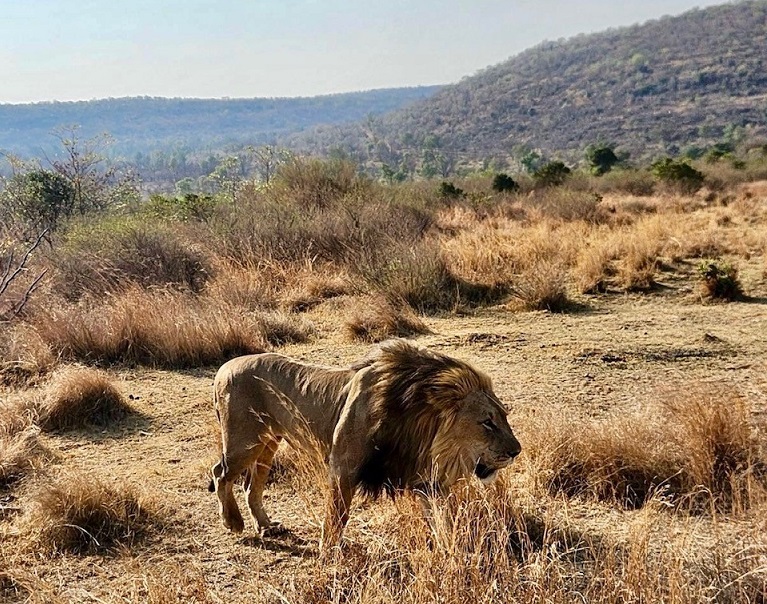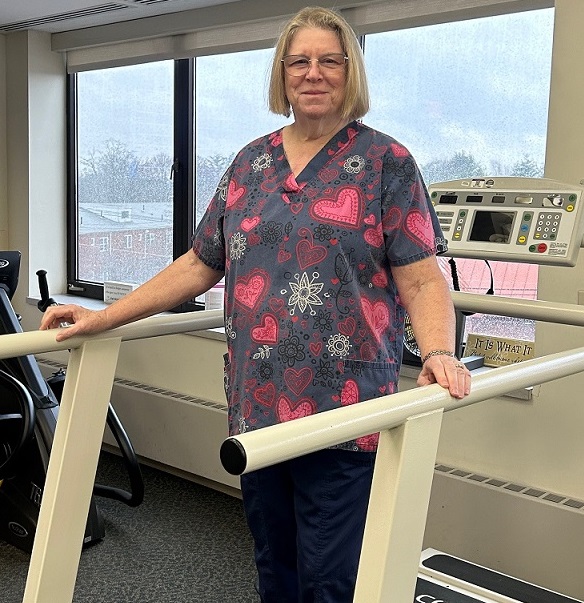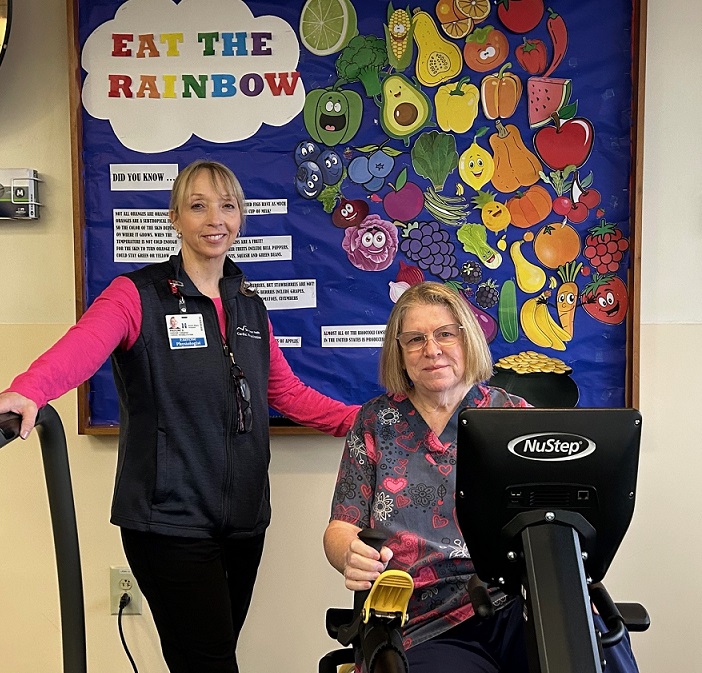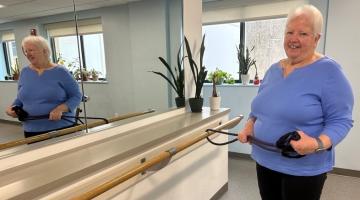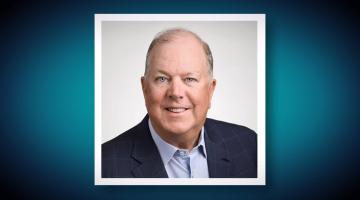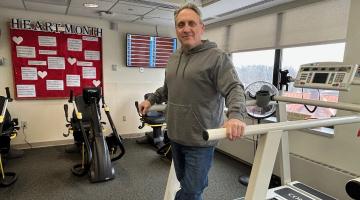How I Survived a Heart Attack on Safari and Thrived Through Cardiac Rehab
Author

South Shore Health
Nine months after suffering a near-fatal heart attack while on safari in South Africa, Jane Goff is thriving and traveling again thanks to South Shore Health’s Cardiac Rehabilitation program.
“I’m feeling really good, have better stamina at work and no limits,” said Jane, a nursing supervisor in charge of patient flow at Morton Hospital.
Jane recently shared the story of her harrowing medical emergency and remarkable comeback through cardiac rehab.
The trip of a lifetime
It was going to be the trip of a lifetime.
Jane and her husband, David originally booked an 18-day African safari to celebrate their 40th wedding anniversary in 2020.
“Then COVID happened and we had to postpone it,” she said.
When it came time to re-book the vacation in 2023, Jane decided the original trip they planned was too long and chose a more streamlined 7-day package.
“Every day was a safari, hours spent traversing stunning landscapes and witnessing incredible wildlife,” she said. “I saw just about every kind of animal except a cheetah.”
‘I never had a pain like that’
On the fifth day of the trip, Jane and David got up early, eager to begin another journey through the savannas and grasslands of South Africa. David headed to the main lodge for breakfast while Jane finished getting ready in their room.
“I wasn’t feeling good,” Jane recalled. “I felt a tightness in my chest and thought the sports bra I was wearing was too tight.” But after changing her top, the dull pain continued, she said.
Jane said the pain in the left side of her chest ran up into her jaw, into her back and down her left arm.
“I never had a pain like that before,” she said. “Cardiac pain is deep inside you.”
Sweating, nauseous, dizzy and short of breath, Jane recognized the telltale signs of a heart attack and texted her husband.
“I made it to the lodge and slumped on the sofa,” she said.
With her blood pressure plummeting and about to pass out, Jane told her husband to get help, to call Jean – a cardiac nurse practitioner who fortuitously happened to be on the same safari tour with them.
Jean administered CPR and used an automated external defibrillator (AED) to shock Jane, who had lost consciousness and suffered a seizure during efforts to revive her.
Pays to have health insurance
The closest hospital was an hour away but the ambulance driver would not transport Jane or even allow her in the vehicle until there was proof her health insurance would pay for her hospitalization.
The local hospital was not equipped to provide cardiac care, but did run tests, including blood work, for which they charged Jane and David up front.
Every treatment and test was a transaction, with David handing his credit card over repeatedly, Jane said. “It was an unusual way of doing things.”
Given more aspirin and the blood thinner Plavix, Jane was flown by helicopter to Milpark Hospital – a world-renowned cardiac hospital in Johannesburg where the first heart transplant was performed.
Triple bypass surgery and an extended stay
Doctors told Jane she had a massive heart attack and discovered during cardiac catheterization that her left ventricle, the heart’s main chamber for pumping blood throughout the body, was not functioning properly. Three of Jane’s heart vessels were fully occluded.
“The doctor told me ‘I could stent these vessels and send you home, but you wouldn’t survive the trip.’”
She needed a triple bypass.
“Ok, I’m all for it,” Jane told the cardiovascular surgeon. “Do what you have to do.”
Two days later, Jane had surgery. She remained in an induced coma, intubated and on a ventilator after the operation, allowing her body to completely rest and collateral circulation – a process in which alternate blood vessels take over for damaged or blocked arteries – to begin.
After three days in the ICU, Jane spent another week in the hospital recovering. Eager to get home after her discharge, Jane was surprised to learn at her post-op checkup that she’d have to extend her stay.
“My surgeon wouldn’t let me go home for two more weeks, and our insurance company wouldn’t pay for our flight back without the doctor’s approval,” she said.
In the end, their 7-day vacation became five weeks in South Africa.
Out of Africa and into Cardiac Rehab
After arriving home, Jane said she wasn’t sure how much she should be doing or how far she should push herself.
“I would get so tired on walks and was afraid I’d go too far and wouldn’t make it back.”
Jane knew she needed to continue her recovery in a place that could help her regain her confidence and stamina. Her brother-in-law gave her a recommendation that was life changing.
“He told me how great the cardiac rehab program at South Shore Health was and that they can get me back to where I was before the heart attack.”
Jane began her cardiac rehab journey in December and knew right away, she had a long way to go.
“When I went in for the initial stress test, I couldn’t last two minutes on the treadmill,” she recalled.
Jane worried she wouldn’t make a full recovery.
“I didn’t know if I’d be able to get back to my pre-heart attack condition and activities,” she said. “Will my whole life be changed? Will I ever get up a flight of stairs again?”
‘A great program all around’
Not only did she get back to where she was, Jane has surpassed it – both physically and in her mindset.
Within just a week or two of starting the program, Jane was able to measure her progress.
All cardiac rehab patients participate in structured exercise sessions, tailored to their individual needs and updated at frequent intervals throughout the 12-week program. Heart rate, rhythm and blood pressure are monitored before, during and after exercise.
Being monitored during exercise added to Jane’s comfort level as she increased her activity and expanded or varied her routine.
“I told my exercise physiologist I wanted to add the bike and cut back on the treadmill,” she said. “As I went along, anything I needed tweaked, they would tweak.”
By the end of the program in March, Jane was able to walk on the treadmill at a greater speed, and at a higher incline for a longer period of time than she could before her heart attack.
But her gains weren’t only physical. Jane learned how important maintaining a healthy diet is for your cardiovascular and overall health.
“Cardiac rehab is more than just exercise. It’s holistic, focusing on both mind and body,” she said. “It’s a great program all around.”
Jane met with a dietician who educated her on how to read nutrition labels and to recognize and avoid high sodium foods like soup, which she previously considered healthy.
Applying what she has learned through cardiac rehab, Jane and David have completely changed their lifestyle – particularly their diet.
“We used to eat out or get takeout five days a week, spending huge amounts of money,” she said. “Not anymore.”
Both have lost weight, David 20 pounds and Jane 25 pounds, and have kept it off. And Jane has maintained her exercise program at home by purchasing an arm bike and a treadmill.
Better than before and back to traveling
Four months after completing cardiac rehab, Jane said she considers herself a patient advocate for the program, recommending it to anyone recovering from a cardiac event.
And Jane and David are back to traveling.
After visiting family in Florida and a trip to San Antonio this spring, the couple have a family cruise to the Caribbean on their agenda for November, when they will celebrate their nephew’s wedding and introduce their grandchildren to David’s native Honduras.
Jane credits the cardiac rehab team for helping her come back better than she was before.
“It was a real community for me,” she said. “Everyone there is so positive, upbeat and dedicated to helping you get better, stay healthy and be your best self, moving forward."
Learn more about Cardiac Rehabilitation and Heart and Vascular Care at South Shore Health.
Author

South Shore Health

